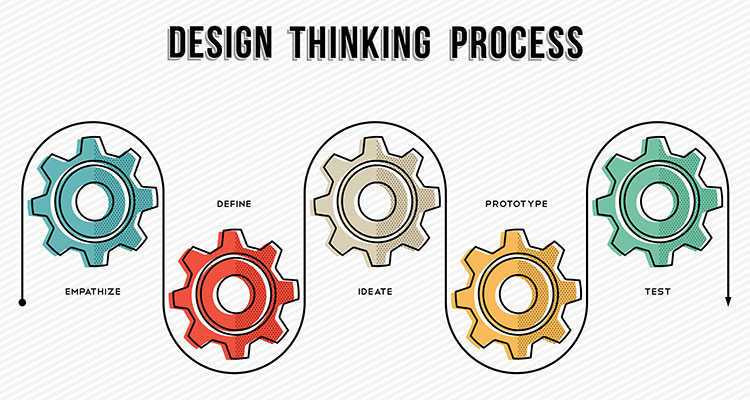Design Thinking: How Does it Relate to AV?
 Any good MBA student from the last decade can tell you about design thinking. It seemed to be one of the buzzwords of the business world for several years. But more than just in engineering and product design, it has started to leak into all areas of business. It can help determine strategy, it can help improve processes and of course, it can help improve design.
Any good MBA student from the last decade can tell you about design thinking. It seemed to be one of the buzzwords of the business world for several years. But more than just in engineering and product design, it has started to leak into all areas of business. It can help determine strategy, it can help improve processes and of course, it can help improve design.
At InfoComm this year, AVIXA is putting on what looks like an amazing course, “Design Thinking for AV.” The course is being instructed by three leaders in design thinking and appears to be very hands on, even including field trips to local museums. If there is still a chance, I would recommend you check out the course and think about how it may change what you do.
Before you sign up however, you may be wondering, what is design thinking? Different people define it in different ways, but in essence I believe it to be a philosophy of how you think, how you design and how you develop experiences for people. The principles are defined differently, but it seems an outstanding principle is to question. Ask why a lot. When you meet with your clients the first time, you may be tempted to tell them exactly what they should do. Rather, you should be asking them what they are trying to do, and then keep asking “Why?” The question is not intended to insult, but rather to challenge and develop your understanding. Librarians understand this concept very well. There is a well-known story of a little boy walking into a library and asking for a book about frogs. Many of us would go and retrieve the boy a reference book on frogs. (Just like if someone says I want a projector pointing to that wall, they get a projector pointing at that wall). However, the experienced librarian asks: “Why? What do you want to learn about frogs?” The boy responds that he does not want to learn anything. He just wanted to draw a picture of one and needs a model. That greatly influences the reference that the librarian is going to retrieve for the boy. In fact, it may not even be a book, it could be an image that is printed out. The boy did not get what he asked for, but he did get what he wanted.
Another principle is empathy and observation. Observe what is going on and what the problem that needs solved is. Based on that observation, make a recommendation. A client may say that they want a huddle room. You could provide them the cookie cutter huddle room. But with design thinking, you would suggest that they let you watch a meeting. You would observe the type of problems that people are having with communication or with technology. Is the problem that no one is listening because they have notebooks out and are trying to take notes? Is the problem that they have teleconferencing or videoconferencing that is not working well and distracting people in the meeting? After making these observations, you could make solid suggestions on a design.
The final generally agreed principle is prototype and test. I believe this to be a particularly weak area in AV. After all, this costs time and money. We tend to put some designs on paper (schematic designs that our customers don’t understand) and get approval. But design thinking asks you to move outside of this box. Draw a 3D rendering of the room. Print a 3D rendering of the room. Stick some temporary technology in a room and see how people react to it. Then, follow the other principles as you do this. If a client does not like a change, ask why? After looking at a 3D model, do they feel the space is too crowded? Watch the clients interact with the technology or the model. Ask them what they like about it and what they don’t. Don’t be afraid of throwing your previous design out and starting over. It is more effective to do it now, than after a space has been built.
I have described design thinking here from the point of view of a salesman or designer. But what about design thinking in strategy? Are you considering venturing into a new lateral market, such as security, or selling services? If so, employ design thinking in this. It is very easy to fall into the, we can not do that because we never have. Or, we can not do that because we looked into it ten years ago and it did not make sense. Ask: “Why?” Ask if something has changed since we last made this decision. Prototype a new business plan, and talk with people in the company about it. Take the pieces that fail, change them and try again.
If this philosophy of “design” interests you, there are dozens of articles to learn from. Harvard Business Review, for example, has had many pieces on this topic. Finally, as you rove the InfoComm floor, try and do it with a design thinking mindset. Rather than question, “Where can I use that?” or “What client can I sell that to?”, look at the application and remember what it does. Store that in your design thinking “mind bank” and use it next time you go through the design thinking process with your clients.





